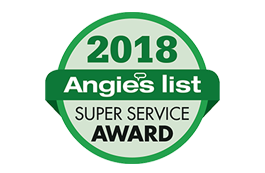Almost everyone is familiar with the distinct smell of mothballs. The pungent chemical odor is a staple in

many people’s closets, but why are these small white crystals useful?
Mothballs are small pellets that are used to combat the presence of moths and other bugs in clothing. The main ingredient in mothballs is naphthalene, which helps kill insects.
The chemical releases a gas that is toxic to moths and helps to kill them and stop them from potentially laying eggs in your clothing.
Moths living indoors feed off of natural fibers which can include hair, pet fur, silk, feathers, and other materials used in most clothing. Moths can literally eat through your clothing, creating holes in some of your favorite garments.
Are Moth Balls Safe?
While mothballs do not pose an immediate danger to its users, there are chemicals in the pellets which can become harmful if ingested. Many people have stopped using mothballs because of the appeal to small children and animals. It is easy for them to mistake them for a snack or candy. Mothballs are dangerous to humans and pets, and one mothball can be extremely toxic if eaten. There are a few different symptoms that may arise after ingesting a mothball, but they may not become noticeable for up to five days.
The symptoms of mothball poisoning include:
- Nausea
- Vomiting
- Diarrhea
- Restlessness
- Fever
- Headache
If you suspect someone in your household, or pet has ingested a mothball it is important to get help right away. You can call the American Association of Poison Control Center at (800) 222-1222.
How to Clean-Up After Moth Infestation
After you have confirmed that you have a moth infestation the nest step is to clean up to help reduce the impact of the moths in your home.
Start by tossing any clothes that have been eaten by moths. These clothes have been compromised and can possibly have eggs waiting to hatch in them.
Next, you will need to wash all of your other clothing. You can dry-clean them, or machine wash them but make sure to use hot water at least over 120 degrees F . This will help kill any remaining moth larvae.
Clean Your Closet
After cleaning your clothes, you will need to thoroughly clean your closet. Pay attention to any small cracks, crevices, and corners. Use a vacuum in hard to reach places. Once your closet is thoroughly clean you can return your clothes to your closet. A great way to protect your clothing is to vacuum seal items that are not currently being used. Items that are out of season can be neatly stowed away in sealed bags. You can also place suits and other natural fiber clothing in garment bags. Moths are highly attracted to natural fibers so you will want to protect them thoroughly.
Be sure to clean your closet regularly, allowing fresh air inside and rotating your clothes. Moths like warm dark environments so installing a few lights on the wall can also help reduce the chances of moths taking over your closet.
Contact the Professionals

While you may be able to tackle your moth issue, it can sometimes become too much to handle and after dealing with the frustration of having your clothes eaten, the last thing you want to do is attempt to fumigate your closet.
Amherst Exterminators can help eliminate your pest control issues. We will thoroughly inspect your home and then establish a plan specific to your issues. Call us at 716-908-2475 today to schedule an appointment with one of our experienced exterminators.


